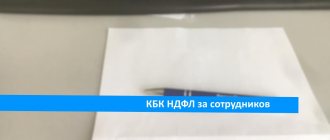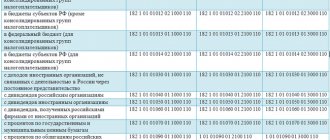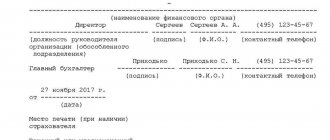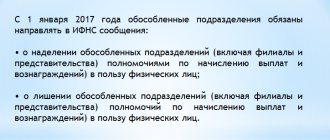The KBK represents an incomprehensible set of figures for most taxpayers, while at the same time being an important guideline for authorities involved in the distribution of incoming funds to the budget. This article will tell you what the KBK is, how it is formed, and where to find it for a specific case.
Budget codes are a set of numbers of twenty characters. This digital designation is intended to streamline financial flows entering the budget and their expenditure.
The BCC must be indicated when generating tax reporting, paying taxes, fines, contributions, taxes and other payments.
What it is
The budget classification was approved in 1998.
This digital designation ensures transparency, targeting and targeted use of budget revenues. There are 4 types of codes:
- for government revenues;
- for expenses;
- indicating the sources from which the budget deficit is financed;
- reflecting government operations.
The existing system of coding financial transactions is based on the principles of unity, stability and openness.
What and where are they used for?
This numerical classifier is introduced to perform the following functions:
- systematization of reporting;
- generation of unified financial information;
- control of cash flows by the state;
- drawing up and implementing budgets at all levels;
- comparison of the dynamics of budget replenishment and expenditure for a certain period;
- control over the state of the state treasury.
KBK is a special coding system that facilitates the work of the federal treasury department.
Payers encounter this concept when filling out payment forms. This is especially true when paying taxes and contributions to extra-budgetary funds.
Where to find information about the correct codes
Reforms of various government agencies, improvement of the tax system, changes in legislation lead to the fact that BCCs are changing. Therefore, when generating payment slips, it is best to check the relevance of the available information.
The budget classification code can be clarified in several ways:
- at the Federal Treasury Department - by telephone, in person or by sending a corresponding request;
- having read the Order of the Ministry of Finance of Russia No. 65n - contains all the information about the KBK;
- on the official website of the Federal Tax Service https://www.nalog.ru/ (here you can immediately generate payment orders yourself).
KBK 18210202140061100160 - transcript 2020
Question: Explanation of KBK 18210202140061100160?
Answer: KBK 18210202140061100160 - Insurance contributions for compulsory pension insurance in a fixed amount, credited to the budget of the Pension Fund of the Russian Federation for the payment of an insurance pension (calculated from the amount of the payer’s income, not exceeding the income limit established by Article 14 of the Federal Law of July 24, 2009 N 212-FZ for periods expired before January 1, 2020)
Please note: From January 1, 2020, all insurance premiums must be paid to the tax office, since it is now the administrator of insurance payments. The tax office details must now be indicated in the “recipient” column of the payment order.
The BCC is displayed in a special field of the payment order when paying tax payments and insurance premiums, penalties and fines in 2020. This field is 104. When filling out a document, it is important to correctly indicate the combination of numbers, since a spelling error entails not only administrative responsibility, but also the need to clarify the payments made.
KBK 18210202140061100160 is indicated in the payment order when making payments when paying insurance premiums for compulsory health insurance in a fixed amount from the amount of the payer’s income, not exceeding the income limit, for reporting periods expired before January 1, 2020.
Current as of: April 24, 2020
Some BCCs indicated by entrepreneurs when transferring taxes and insurance contributions are the same for all individual entrepreneurs, regardless of the applied taxation regime. But some budget classification codes are “intended” for a specific regime.
BCCs for insurance premiums represent the largest group of codes that are necessary for entrepreneurs of absolutely all taxation regimes.
Individual entrepreneurs, when filling out payments for insurance premiums in 2018, must indicate the following BCC:
The KBK codes for 2020 were approved by the Ministry of Finance in Order No. 65n dated 07/01/13. Each type of tax or contribution has its own indicator value. From this article you will learn in what cases and to whom you need to enter KBK 18210202140061200160 in the payment document.
How is it formed
KBK is a twenty-digit number, the digits of which are divided into groups:
| KBK | 3 | 9 | 3 | 1 | 0 | 2 | 0 | 2 | 0 | 5 | 0 | 0 | 7 | 1 | 0 | 0 | 0 | 1 | 6 | 0 |
| Serial number of the digit in the code | 1 | 2 | 3 | 4 | 5 | 6 | 7 | 8 | 9 | 10 | 11 | 12 | 13 | 14 | 15 | 16 | 17 | 18 | 19 | 20 |
| Parts | A | B | IN | |||||||||||||||||
| Code name | Administrator | Group | Subgroup | Article | Sub-article | Element | Program | Economic classification | ||||||||||||
Group “A” - indicate the recipient of the payment. He is responsible for replenishing the relevant part of the state budget. The recipient may be tax authorities, extra-budgetary funds, etc.
Group "B" contains numbers from 4 to 11, each of which has a specific meaning.
4 in order, the digit of the code indicates the group. This position may be
- 1 – tax and non-tax revenues;
- 2 – gratuitous accruals (from non-residents, state, non-state and supranational organizations).
The 5th and 6th characters are used to indicate the income subgroup:
- 01 - income tax;
- 02 — social insurance accruals;
- 03 - taxes on the sale of goods on the territory of the Russian Federation;
- 04 — duty on the import of goods into Russia;
- 05 - tax on total income;
- 06 - property contribution;
- 07 — fees for the use of natural resources;
- 08 - state duty;
- 09 - debt and recalculations for canceled taxes, fees and other obligatory payments;
- 10 - profit from foreign economic activity;
- 11 - fee for the use of state or municipal property;
- 12 — payments from the use of natural resources;
- 13 - profit from the provision of paid work, services and compensation for state expenses;
- 14 - profit from sales of assets;
- 15 — administrative fees and charges;
- 16 - fines, sanctions, damages;
- 17 - other non-tax income;
- 18 - interbudgetary transfers and transfer calculations of the budget system of the Russian Federation.
The 7th and 8th ordinal numbers provide information about the item of income. Numbers 9 to 11 indicate the income subitem.
Both parameters are entered into payments and other documents from the official classification of budget income of the Russian Federation.
The 12th and 13th digits encode the budget level. According to the current coding, payment can go to:
- 01 - budget of the Russian Federation;
- 02 - regional;
- 03 - municipal budget;
- 04 - urban;
- 05 - district;
- 06 — to the pension fund;
- 07 - to the social insurance fund;
- 08 - compulsory medical insurance fund;
- 10 - budget of a rural settlement;
- 11 - urban district with intracity division;
- 12 - intracity district;
- 13 - urban settlement.
Group “B” includes numbers 14-20, which determine the reason for payment (14-17) and type of receipt (18-20):
- payment of the statutory fee - 1000;
- payment of penalties - 2100;
- payment of the fine amount – 3000;
- other payments – 4000.
The coding of revenue types can have the following meanings:
- 110 - replenishment of budgets from tax revenues;
- 120 - profit received from the use of state property;
- 130 - profit from the provision of paid services, performance of work;
- 140 - payment of imposed administrative sanctions;
- 150 - grants, subsidies, interbudgetary transfers;
- 160 — social insurance contributions;
- 180 - other income (grants, donations, duties, etc.)
Items of disposal of non-financial assets (decrease in value):
- 410 - means of labor repeatedly used in production (main);
- 420 - intangible assets;
- 430 - non-produced assets;
- 440 - material inventories (raw materials, materials, components, finished products, etc.).
Knowing the basics of drawing up a BCC, it is easy to determine the intended purpose of a payment with a code.
393 1 0200 160:
- 393 – means that the payment is sent to the Social Insurance Fund;
- 1 – income of the tax authority;
- 02 – payment of contributions for compulsory social insurance;
- 02050 - the employer is the tax payment agent;
- 07 - payment is distributed to the budget of the Social Insurance Fund of the Russian Federation;
- 1000 – payment of the fee;
- 160 — contributions to compulsory social insurance;
Thus, payment by code means insurance premiums for compulsory social insurance against industrial accidents and occupational diseases.
KBK patent IP 2020
The details for paying tax under the patent taxation system for individual entrepreneurs have not changed since 2020. In the payment order, in field 104, you must indicate the territorial Federal Tax Service.
KBK for paying for a patent in 2020: payment to the budget of a separate urban district
| Purpose of payment | KBK |
| Principal payment (arrears, debt) | 182 1 0500 110 |
| Fine | 182 1 0500 110 |
| Interest on payment | 182 1 0500 110 |
| Penalty | 182 1 0500 110 |
KBK patent IP 2020: Moscow region (Moscow) Sevastopol, St. Petersburg
| Purpose of payment | KBK |
| Principal payment, arrears, debt | 182 1 0500 110 |
| Fine | 182 1 0500 110 |
| Interest on payment | 182 1 0500 110 |
| Penalty | 182 1 0500 110 |
BCC for patent 2020: municipal payments
| Purpose of payment | KBK |
| Principal payment, arrears, debt | 182 1 0500 110 |
| Fine | 182 1 0500 110 |
| Interest on payment | 182 1 0500 110 |
| Penalty | 182 1 0500 110 |
KBK for paying for a patent in 2020: payments by city districts with intra-city division
| Purpose of payment | KBK |
| Principal payment, arrears, debt | 182 1 0500 110 |
| Fine | 182 1 0500 110 |
| Interest on payment | 182 1 0500 110 |
| Penalty | 182 1 0500 110 |
KBK patent for 2020: payment to the budgets of intracity districts
| Purpose of payment | KBK |
| Principal payment, arrears, debt | 182 1 0500 110 |
| Fine | 182 1 0500 110 |
| Interest on payment | 182 1 0500 110 |
| Penalty | 182 1 0500 110 |
For failure to comply with tax payment deadlines, penalties are provided in the form of penalties and interest on the principal payment.
https://youtu.be/clUUtF4VNh0
For basic taxes
The need to select the appropriate code arises when filling out payment details. Let's look at the most common codes.
To pay insurance premiums
When paying insurance premiums, indicate the following BCCs depending on the situation.
Table 1. Insurance contributions for employees
Table 2. Pension contributions for employees
Table 3. Insurance deductions of an individual entrepreneur for himself
Table 4. Payments for insurance against industrial accidents
For VAT
In 2020, the following codes are used to make payments for value added tax:
To pay personal income tax
Personal income tax is one of the main sources of budget funding. When paying it, the following BCCs are used:
When was the BCC for insurance premiums last updated?
Since 2020, the bulk of insurance premiums (except for payments for accident insurance) began to be subject to the provisions of the Tax Code of the Russian Federation and became the object of control by the tax authorities.
As a result of these changes, in most aspects, insurance premiums were equated to tax payments and, in particular, received new, budgetary BCCs. The existence of a situation where, after 2020, contributions accrued according to the old rules can be transferred to the budget, required the introduction of special transitional BCCs for such payments, additional to the main ones.
As a result, starting from 2020, there are 2 BCC options for insurance premiums supervised by the Federal Tax Service. At the same time, the codes for contributions to accident insurance that remain under the control of the Social Insurance Fund have not changed.
From April 23, 2018, the Ministry of Finance introduced new BCCs for penalties and fines on additional tariffs for insurance premiums paid for employees entitled to early retirement. Now BSCs are divided not by periods: before 2017 and after - as before, but according to the results of a special labor assessment.
We talked about the details here.
Current BCCs for insurance premiums, including those changed from April 23, 2018, can be seen in the table by downloading it in the last section of this article.











